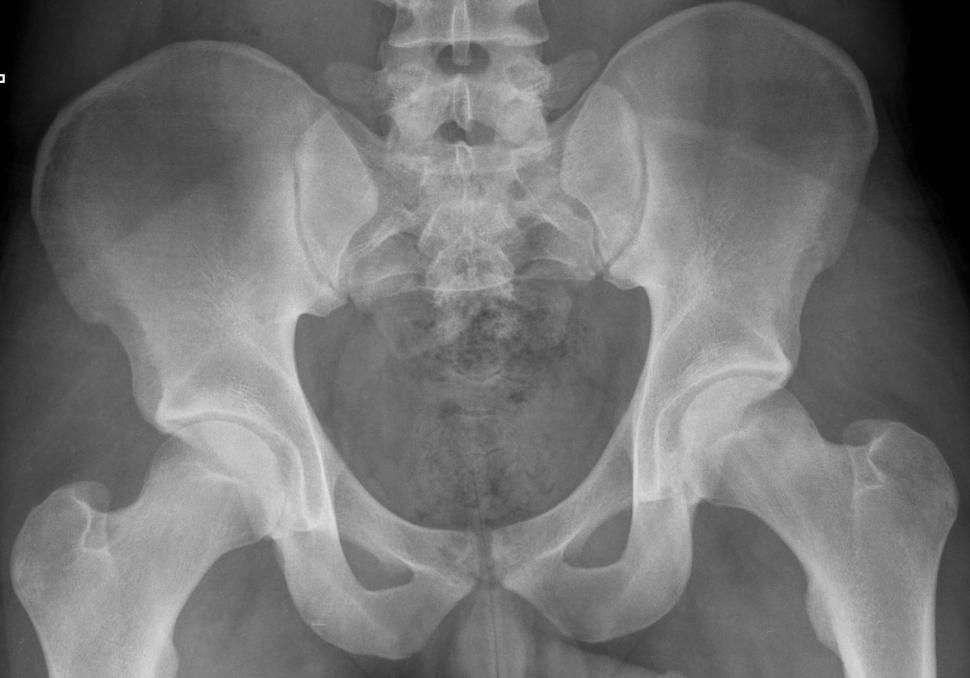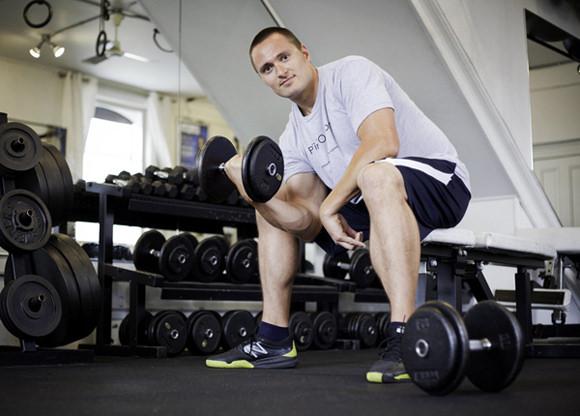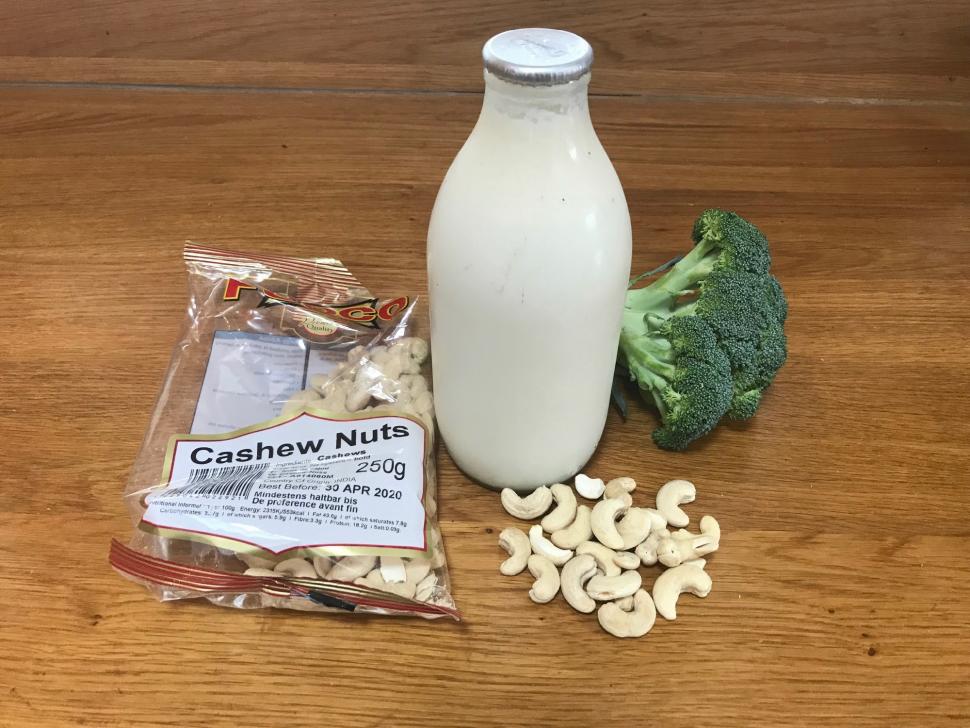Cycling can make your bones brittle; here’s what to do about it
by Mat Brett May 31 2019 42CommentsFind out how to keep your bones strong and healthy

“Go running over cycling to avoid brittle bones, men told” announced a headline in The Telegraph(link is external) earlier in the week, reigniting a long-running (ahem!) discussion about cycling and osteoporosis.
The article referred to a recent study: Bone Mineral Density Among Men and Women Aged 35 to 50 Years(link is external), published in the The Journal of the American Osteopathic Association.
Lead researcher Martha Bass says the best way to maintain bone mineral density (BMD) is through weight-bearing exercises, like walking, running and jumping. Moderate weight lifting is also beneficial, although older adults are warned to maintain good form and avoid overly heavy weights.

Bass also notes that many of the men participating in her study had strong exercise habits, although a majority reported cycling as their workout of choice, and cycling is not weight-bearing.
“The body [relies] on weight-bearing exercise to keep bones strong,” says Martha Bass. “It really does boil down to use it or lose it.”
Of course, cycling has many health benefits – improved cardiovascular fitness, reduction in mortality, reduced cardiovascular risk factors, reduced risk of cancer – but creating strong bones isn’t among them. On the contrary, research suggests that a lot of cycling could even reduce your bone density, and that’s not scaremongering.
In 2012, Cycling and Bone Health: a Systematic Review(link is external) was published, looking at the findings of 31 studies on the subject.
The authors said, “From our comprehensive survey of the current available literature it can be concluded that road cycling does not appear to confer any significant osteogenic [relating to the formation of bone] benefit. The cause of this may be related to spending long hours in a weight-supported position on the bike in combination with the necessary enforced recovery time that involves a large amount of time sitting or lying supine, especially at the competitive level.”
Well, that’s encouraged in cycling! There’s that old maxim among professionals and other serious racers: don’t stand if you can sit, and don’t sit if you can lie down. The idea is to avoid weight bearing activities in order to maximise recovery from training and racing.
Even if you’re not purposely following this advice, it’s likely that if you’re doing a lot of miles you’ll be doing a lot of sitting around on your arse afterwards on the basis that you’re knackered. It’s the natural thing to do.
According to one study(link is external), two-thirds of professional cyclists had abnormally low BMD values, and it’s not just the pros who are at risk. Another recent study(link is external) compared recreational riders (training 3-8hrs a week) and trained male road cyclists (training more than 8hrs a week) and found, “Areal bone mineral density (aBMD, the bone mineral content divided by the area) is lower in trained male road cyclists compared with recreational, specifically at the hips. Lumbar aBMD is low in both trained and recreational cyclists.”
The issue can be compounded by restrictive eating habits adopted by cyclists keen to gain a performance advantage by keeping their weight low, and by the low weight itself which reduces skeletal loading forces.
We could go on but the bottom line is that the evidence suggests cycling won’t improve your bone density and could even lead to it deteriorating. The more years you cycle, the more likely you are to develop osteoporosis and osteopenia (which is essentially a midway point on the way to osteoporosis), putting you at a higher risk of fracturing bones.
That’s put a downer on your day, hasn’t it? You think you’re doing the right thing for your health by getting out on the bike regularly and then… bam!
It is worth noting that most of the research is based on competitive road cyclists. What the research does at least tentatively suggest is that if you’re a recreational cyclist – or any other type of cyclist – you probably don’t need to worry about your riding having a negative effect on your bone density if you ride for less than about 8hrs per week. On the other hand, no matter how much or how little you cycle, it won’t have a positive effect on your bone density.
Naturally, you don’t want to avoid riding your bike – and that’s hardly what we’d be advocating here at road.cc – so what can cyclists do to improve their bone density? Let’s go back to the research…
A review titled Exercise and Bone Mass in Adults(link is external) looked at studies into training and bone measurement and said, “Cross-sectional studies show in general that exercise modalities requiring high forces and/or generating high impacts have the greatest osteogenic potential… Not all exercise modalities have shown positive effects on bone mass. For example, unloaded exercise such as swimming has no impact on bone mass, while walking or running has limited positive effects. It is not clear which training method is superior for bone stimulation in adults, although scientific evidence points to a combination of high-impact (ie jumping) and weight-lifting exercises.”
Jumping? Well, some cyclists include plyometrics in their training programme – where muscles exert maximum force in short intervals of time – in order to develop power. Maybe that’s a good place to start. Then there’s weight training…
An article was published in the Journal of Strength and Conditioning Research last year with the title: Resistance Training Is Associated With Higher Lumbar Spine and Hip Bone Mineral Density in Competitive Male Cyclists(link is external).
The title pretty much gives away the plot! The researchers measured BMD at four specific points in 40 cyclists at the start of a cycling season and found: “Weight training was associated with higher BMD of the lumbar spine, hip, femoral neck [the femur being the thighbone], and femoral trochanter [at the top of the femur]. No other factor was a predictor of preseason BMD in this sample. These data emphasise the need for competitive male cyclists to participate in weight training to maintain or increase bone mass of the lumbar spine and hip.”

In a review of the available literature titled Effects of Resistance Exercise on Bone Health(link is external) published last year, A Ram Hong and Sang Wan Kim said, “Resistance exercise has been highlighted as the most promising intervention to maintain or increase bone mass and density. This is because a variety of muscular loads are applied on the bone during resistance exercise, which generate stimuli and promote an osteogenic response of the bone.”
Resistance exercise in this context refers to free weights, weight machines, medicine balls, elastic bands, and different movement velocities. More specifically, it includes “weighted lunges, hip abduction/adduction, knee extension/flexion, plantar-/dorsi-flexion, back extension, reverse chest fly, and abdominal exercises or a smaller number of compound movements of squats and deadlifts, targeting the major muscle groups attached to the hip and spine”.
“The intensity and type of resistance exercise should be individualised according to tolerance and ability of adults, particularly in the presence of pain,” the report continues. “At least two sets of one exercise for each major muscle group should be performed at a target intensity of eight to 12 repetition maximum.”
Repetition maximum, or reps max, is the most weight you can manage for a given number of repetitions.
It must be said that most of this literature refers to older people who have developed osteoporosis, not specifically to athletes wanting to avoid it, but the advice for maintaining strong bones is to bring resistance training into your life along with something like plyometrics.
One study(link is external), this time based on post-menopausal women, found that power training is more effective than strength training for maintaining bone mineral density. What’s the distinction? In this study, strength training repetitions were performed slowly (4secs for the concentric/ muscle shortening movement, 4secs for the eccentric/ muscle lengthening movement) whereas power training reps were fast (explosive for the concentric phase). Incorporating that into your resistance training is relatively straightforward, but build up to it slowly in order to avoid injury.
Unfortunately, there’s no study out there that gives the perfect programme for cyclists who want to look after their bones, but you might want to make use of these guidelines gleaned from the available literature:
• Add resistance exercise (see examples above) and plyometrics to your training programme
• Don’t be afraid of heavy weights!
• Developing bone strength is site-specific so perform two sets of a resistance exercise for each major muscle group
• Use the heaviest weight that allows you to perform 8-12 reps per set
• Rest sufficiently between sets to allow maximal efforts
• Some form of bone strengthening training is recommended 2-3 times per week
• Sports that involve unevenly applied impacts – 5 aside football, tennis, and so on – also stimulate bone strengthening
Diet
The loss of calcium through prolonged periods of sweating has been suggested as one of the reasons behind the poor bone health of many cyclists. A study from 2015 looked at: The Effects of a Calcium-Rich Pre-Exercise Meal on Biomarkers of Calcium Homeostasis in Competitive Female Cyclists(link is external).
The researchers found that a calcium-rich breakfast meal (containing about 1,350mg of calcium) consumed 2hrs before a 90min high-intensity ride reduced the levels of bone breakdown during exercise.

The NHS suggests(link is external) that most adults need around 700mg of calcium a day for healthy bones. Bear in mind that you get 544mg in a pint of whole milk. More good sources of calcium include other dairy foods, green leafy vegetables, and nuts.
Vitamin D is also crucial for bone health. Dietary sources of vitamin D include eggs and oily fish but we get most that we need from the action of sunlight on our skin. You might get enough from being out on your bike although everyone is advised to consider taking a daily vitamin D supplement.Brittle bonesosteoporosisosteopeniaSweatperspirationcalciumvitamin Cresistance trainingplyometrics

Mat has worked for loads of bike magazines over 20+ years, and been editor of 220 Triathlon and Cycling Plus. He’s been road.cc technical editor for eight years, testing bikes, fettling the latest kit, and trying out the most up-to-the-minute clothing. We send him off around the world to get all the news from launches and shows too. He has won his category in Ironman UK 70.3 and finished on the podium in both marathons he has run. Mat is a Cambridge graduate who did a post-grad in magazine journalism, and he is a past winner of the Cycling Media Award for Specialist Online Writer.
